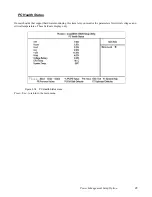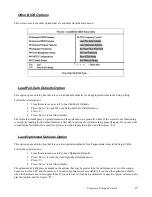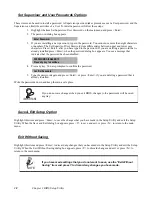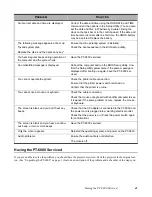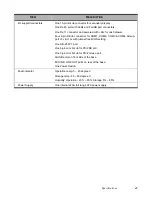
39
A
PPENDIX
This appendix describes locating and solving problems that you may encounter while using the PT-6800.
Troubleshooting
Often after time spent troubleshooting, the problem is traced to something as simple as a loose connection. Check the
following before proceeding to the problem-specific solutions.
Tips for Troubleshooting
In each problem-specific section, try the steps in the order suggested. This may help you to solve the problem more
quickly.
Try to pin point the problem and thus avoid replacing non-defective parts. For example, if you replace batteries and the
problem remains, put the original batteries back and go to the next step.
Keep a record of the steps you take when troubleshooting: The information may be useful when calling for technical
support or for passing on to service personnel.
•
Use some other electrical device to confirm that the electrical outlet is working.
•
Ensure all connections are securely attached.
The Power-On Self Test
The Power-On Self Test (POST) runs every time you turn on or reset the computer. The POST checks memory, the
mainboard, the display, the keyboard, the disk drives, and other installed options.
If failure is detected in an area other than the mainboard (such as the keyboard or an adapter card), an error message is
displayed on the screen and testing is stopped.
If your system does not successfully complete the POST, but displays a blank screen, have the PT-6800 serviced.
Beep Errors at POST
There are two kinds of beep codes in the BIOS.
•
Video error - a single long beep followed by three short beeps indicates a video error, the screen can not be ini-
tialized and no information can be displayed.
•
DRAM error - a single long beep indicates that a DRAM error has occurred.
Содержание PT-6800
Страница 1: ...PT 6800 User manual ...
Страница 2: ......
Страница 8: ...vi ...
Страница 52: ...44 Appendix ...











